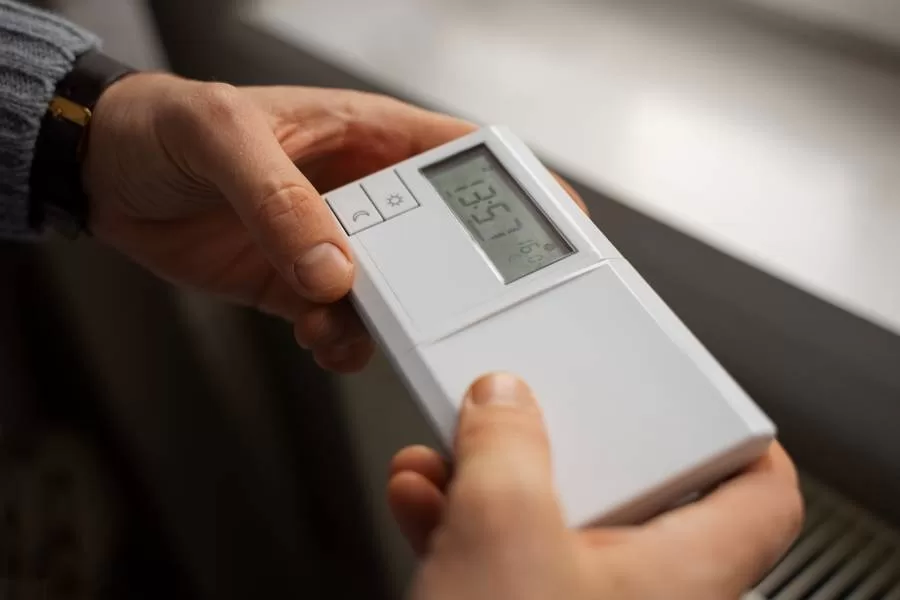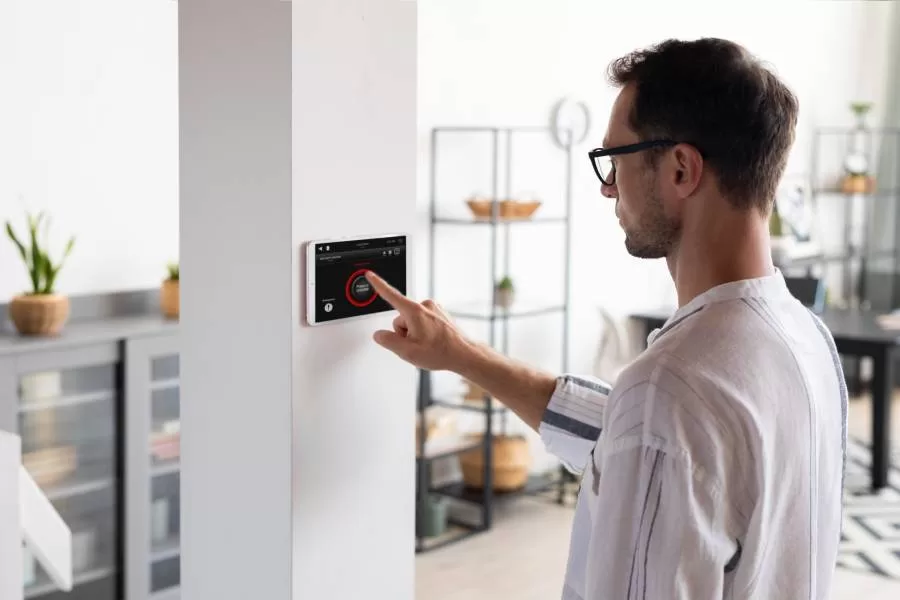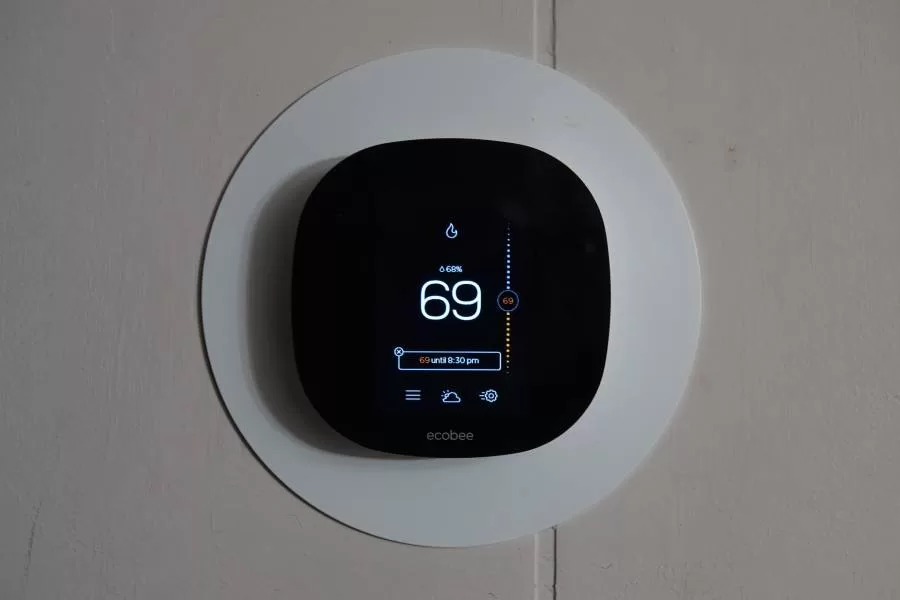Are you tired of coming home to a hot, stuffy house during summer? It’s time to take control of your home’s temperature by programming your thermostat for summer. With simple tips and tricks, you can save money on your energy bills and stay cool all summer.
Summer temperatures can be brutal, but with the correct thermostat settings, you can keep your house comfortable without breaking the bank. In this blog post, we’ll walk you through how to program your thermostat for summer, including tips on setting the temperature, scheduling your AC system and using smart thermostats.

- Why It’s Important to Program Your Thermostat
- Understanding Your Programmable Thermostat Settings
- Choosing the Right Temperature Settings
- Setting Your Thermostat for Optimal Energy-Efficiency
- How to Program Your Thermostat for Summer
- FAQ’s
- Conclusion: Enjoying Comfortable and Cost-Effective Cooling
Whether you’re a new homeowner or just looking to save money on energy bills, this guide will help you stay cool and comfortable all summer.
- Download the manufacturer’s app and follow the instructions to connect it to your home’s Wi-Fi network.
- Connect your thermostat to your home Wi-Fi network.
- Set up a daily schedule for your thermostat, taking into account your daily routine and when you are typically home or away.
- Use the app to adjust the thermostat remotely or change your schedule as needed.
Why It’s Important to Program Your Thermostat
Programming your thermostat is essential to maintaining a comfortable and energy-efficient home. With the proper settings, a programmable thermostat can help you save money on energy costs while ensuring that your indoor temperature remains at the ideal level for your comfort.
One of the primary benefits of programming your thermostat is that it allows you to set your indoor temperature to the ideal temperature for your needs.
Depending on the season and time of day, you can adjust your settings to ensure your house is always at a comfortable indoor temperature. For example, during the summer, you may want to set your thermostat to a slightly higher temperature during the day when you’re not home and then lower it in the evening when you’re there to enjoy the cool air.
By programming your thermostat, you can also save money on energy costs. According to the U.S. Department of Energy, you can save up to 10% on your cooling costs by turning your thermostat back 7-10 degrees for 8 hours daily. This means that if you’re away from home during the day, you can set your thermostat higher to save energy and money.
In addition to saving money on energy costs, programming your thermostat can also help you save money on cooling costs. By setting your thermostat to a higher setting during the hot summer months, you can reduce the time your air conditioning unit runs, which can help lower your cooling costs.
Overall, programming your thermostat is an easy and effective way to maintain a comfortable indoor temperature while saving energy and cooling costs.
By setting your thermostat to the ideal temperature settings and adjusting it based on your daily routine, you can ensure that your home is always at the perfect temperature without breaking the bank.

Understanding Your Programmable Thermostat Settings
Understanding your programmable thermostat settings is crucial for maximizing energy efficiency and reducing energy costs.
A programmable thermostat allows you to set different temperatures for different times of the day so that you can adjust the optimal temperature to your liking while also conserving energy when you’re not home or sleeping.
It’s essential to understand the different settings, such as “hold,” “override,” and “vacation” modes, and how they affect your heating and cooling system. Learning how to program your thermostat correctly saves you money on your energy bills and reduces your carbon footprint.
Choosing the Right Temperature Settings
Choosing the right thermostat temperature setting during the summer months is important to ensure a comfortable indoor environment. The ideal temperature for most people is between 72-78 degrees Fahrenheit, but this can vary based on personal preference and the outdoor temperature. Setting the digital thermostat to a cooler temperature at night is recommended to help promote better sleep.
Additionally, using a programmable thermostat can help save energy and money by automatically adjusting during times when no one is home.
By finding the perfect temperature for your home and utilizing a programmable thermostat, you can ensure a comfortable temperature and energy-efficient environment during summer.
Setting Your Thermostat for Optimal Energy-Efficiency
When it comes to saving on energy costs, setting your thermostat to efficient temperature settings can make a big difference. Here are some tips to help you save on your utility costs and annual energy costs:
- Set your thermostat to a constant energy-saving temperature, such as 68°F during the day and 62°F at night, instead of constantly adjusting it.
- By utilizing a programmable thermostat it can efficiently regulate the indoor environment according to their schedule and minimize energy waste during periods of absence.
- Consider installing a smart thermostat that can learn your routine and adjust the settings accordingly, saving you even more energy costs.
- Use ceiling fans to circulate air and keep your home feeling cooler in the summer and warmer in the winter so that you can set your thermostat a few degrees higher or lower.
- Seal any air leaks in your home to prevent warm or cool air from escaping, which can help you maintain efficient temperature settings and reduce your energy bills.
By setting your thermostat to energy-saving setting and making a few simple changes, you can save on your annual energy costs and improve cost efficiency in your home.

How to Program Your Thermostat for Summer
Summer is very hot, and we rely on our air conditioners to keep us cool and comfortable in our homes. However, correctly setting the thermostat is essential to avoid wasting energy or money.
Here are some tips on how to program your thermostat for summer:
- Set the thermostat to a higher temperature: During the summer, it is recommended to set the thermostat to a higher temp than you would during the winter. The ideal temperature range for summer is between 72 and 78 degrees Fahrenheit. This will help you save energy and money on your utility bill.
- Use a custom schedule: If you have a programmable thermostat, you can set a custom temperature schedule that suits your needs. For example, you can program the thermostat to increase the normal setting when you are not at home and lower it when you return.
- Use the “auto” setting: The “auto” setting on your thermostat will allow your air conditioner to cycle on and off automatically, maintaining the desired temperature. This will help save energy and money, preventing your air conditioner from running constantly.
- Consider a cooler room temperature range for sleeping: If you find it difficult to sleep when it is warmer, consider setting the thermostat to a cooler temperature range at night. This will help you sleep more comfortably and wake up feeling refreshed.
- Check your air conditioner temperature: It is important to check the temperature of your air conditioner to ensure it functions correctly. If the climate control is set too low. It may indicate that your air conditioner is not working efficiently, leading to higher electricity bills.
By following these tips, you can program your thermostat for summer and ensure that you save energy and money while staying cool and comfortable in your home. Remember to adjust your thermostat settings to maintain the ideal temperature range for your needs.

FAQ’s
Is it cheaper to leave AC on in the summer?
No, leaving the AC on in the summer is not cheaper. Leaving the AC on all day, even when no one is home, will result in higher energy bills. Turning off the AC when leaving the house and turning it back on when returning is more cost-effective.
What is the best AC schedule for summer?
The recommendation of an AC schedule for summer is to set the thermostat between 72-78°F during the day when you are at home and awake and then increase it by a few degrees when you are asleep or away from home.
What temperature should I set my thermostat to when on vacation?
When away on vacation during summer, it is recommended to set your thermostat to 85°F (29°C) or higher. This helps save energy and reduce your electricity bill while preventing excessive heat and humidity from damaging your home or belongings.
However, if pets or plants require a cooler environment, you may need to adjust the climate controls or consider alternative arrangements for their care.
How many hours should AC run in summer?
The number of hours an AC should run in summer depends on various factors, such as the size of the room, the current weather conditions, and the level of insulation in the room.
However, as a general rule of thumb, an AC should run 8-12 hours a day in summer to maintain a comfortable temperature indoors without overworking the unit. It’s important to note that running an AC for extended periods can increase energy consumption and lead to higher electricity bills.
Conclusion: Enjoying Comfortable and Cost-Effective Cooling
In conclusion, programming your thermostat for summer can significantly impact your comfort and your wallet. Following these tips and tricks, you can ensure your home is always at the perfect temperature without wasting energy or money on unnecessary cooling.
From understanding your thermostat’s settings to utilizing programmable features, programming your thermostat for summer can help you enjoy a more comfortable and cost-effective living space. So don’t wait – start programming your thermostat today and experience the benefits yourself!
Need help installing, repairing, or maintaining your thermostat or AC? We’re a call away. Contact us today and we’ll get started on your AC.





